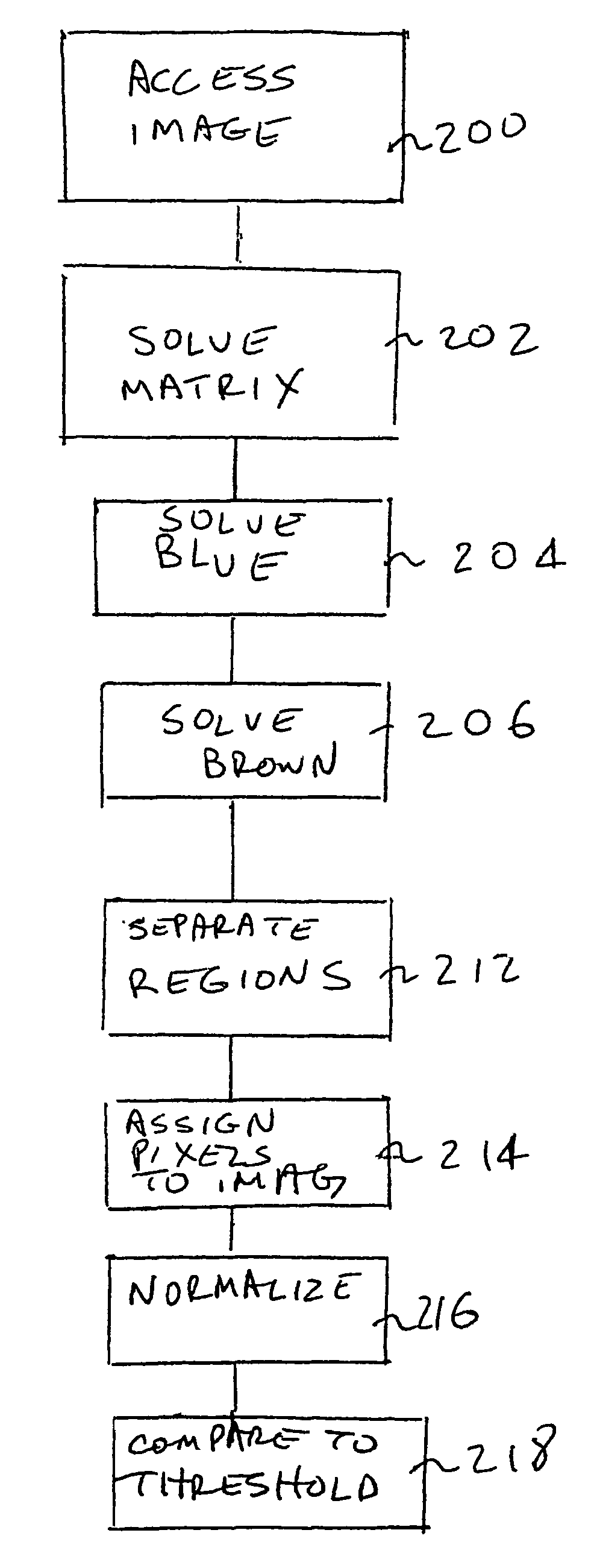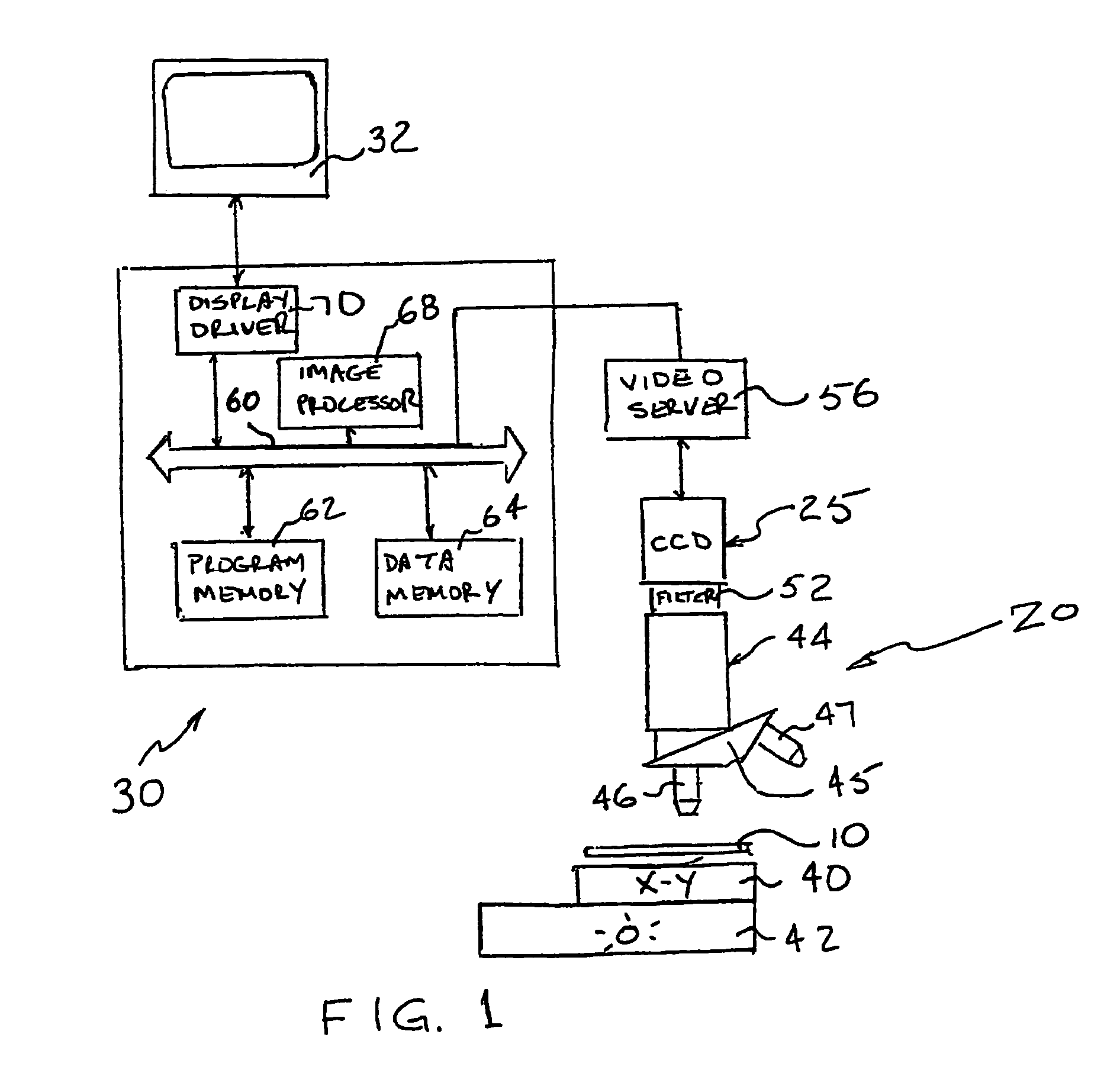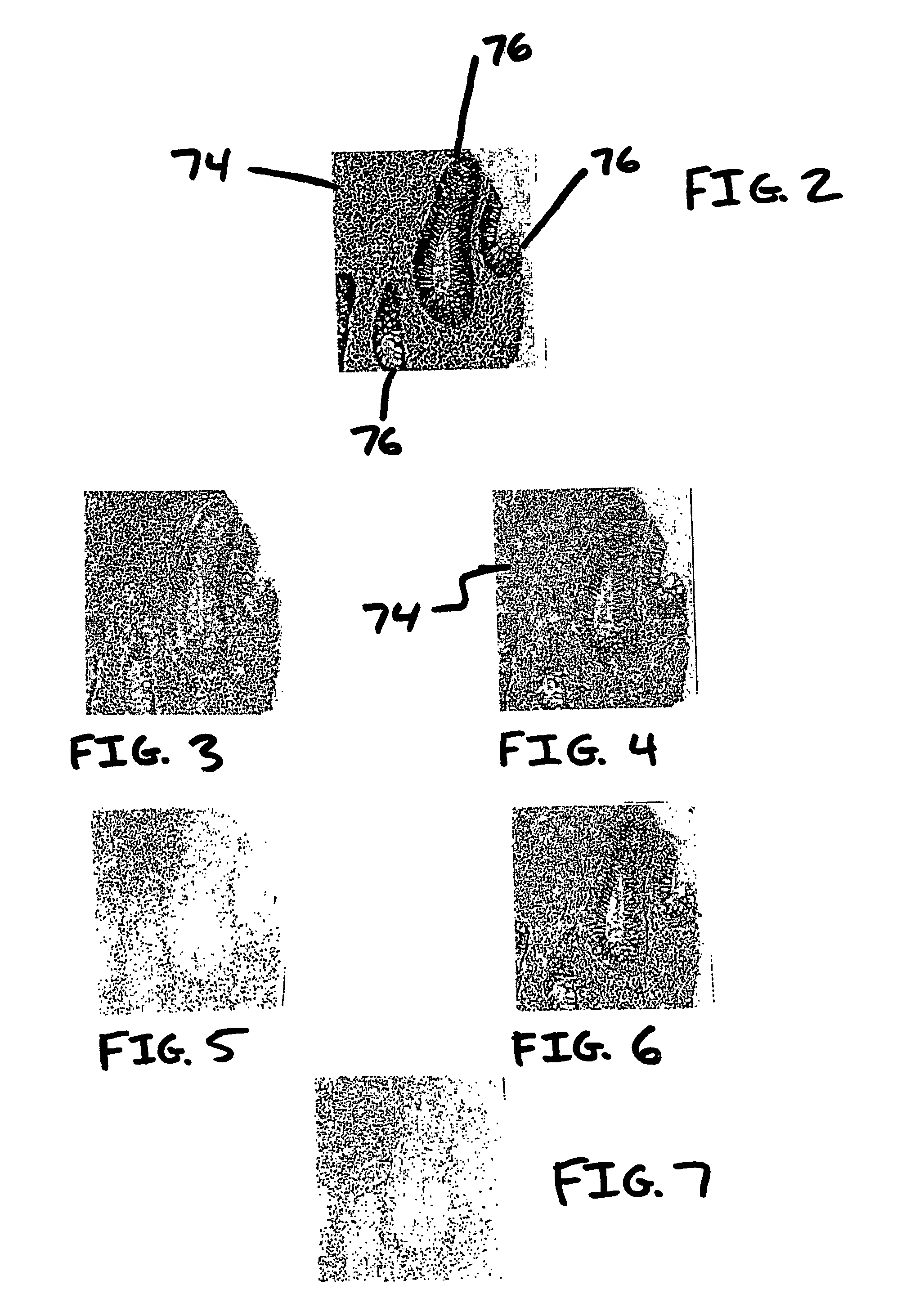Color unmixing and region of interest detection in tissue samples
a color unmixing and tissue sample technology, applied in the field of color unmixing and region of interest detection in tissue samples, can solve the problems of not revealing the spectrum of immunohistochemical dye analysis, and the prior art further does not disclose the color concentration of the second dye normalization
- Summary
- Abstract
- Description
- Claims
- Application Information
AI Technical Summary
Benefits of technology
Problems solved by technology
Method used
Image
Examples
Embodiment Construction
[0032]FIG. 1 is a block diagram illustrating a system for producing images of a slide 10 having mixed colors and analyzing the images to provide deconvoluted images in which colors are unmixed. One color may be used simply for improved visibility of all tissue in the slide, while the other color may bind to protein in tissue affected by a particular disease. The slide 10, which holds a tissue sample, is further described with respect to FIG. 2 below. The system of FIG. 1 includes a microscope 20, a camera 25 and a computer 30 which may have a monitor 32.
[0033]In the microscope 20, the slide 10 is supported on an X-Y stage 40. The X-Y stage 40 includes a platform that is movable in two degrees of freedom so that an operator, e.g. a pathologist, can view selected areas of the slide 10. Commonly, an illumination source 42 is located beneath the X-Y stage 40. The illumination source 42 is a white source that will have a broad spectrum of component wavelengths. The slide 10 is viewed by ...
PUM
 Login to View More
Login to View More Abstract
Description
Claims
Application Information
 Login to View More
Login to View More - R&D
- Intellectual Property
- Life Sciences
- Materials
- Tech Scout
- Unparalleled Data Quality
- Higher Quality Content
- 60% Fewer Hallucinations
Browse by: Latest US Patents, China's latest patents, Technical Efficacy Thesaurus, Application Domain, Technology Topic, Popular Technical Reports.
© 2025 PatSnap. All rights reserved.Legal|Privacy policy|Modern Slavery Act Transparency Statement|Sitemap|About US| Contact US: help@patsnap.com



